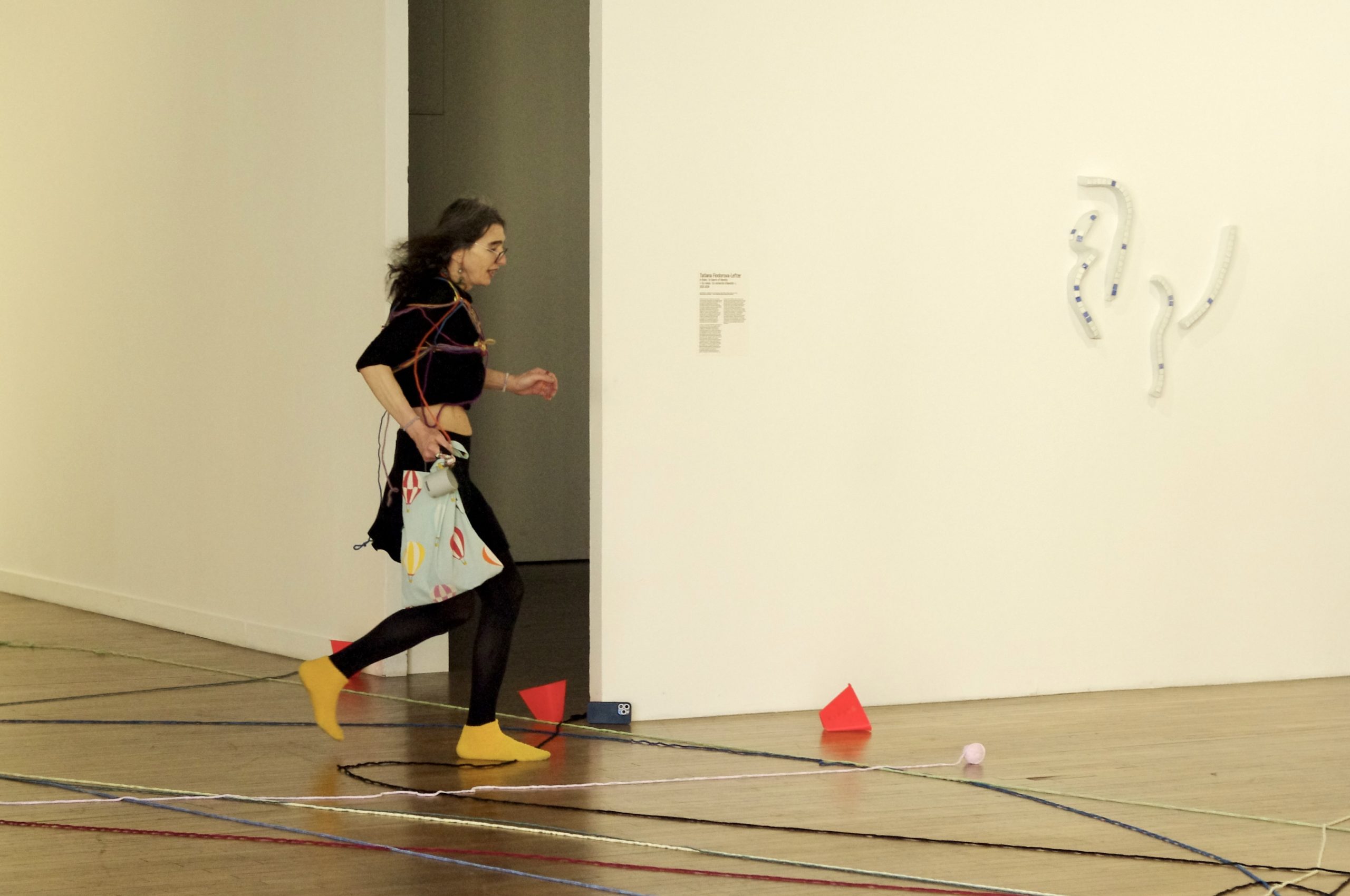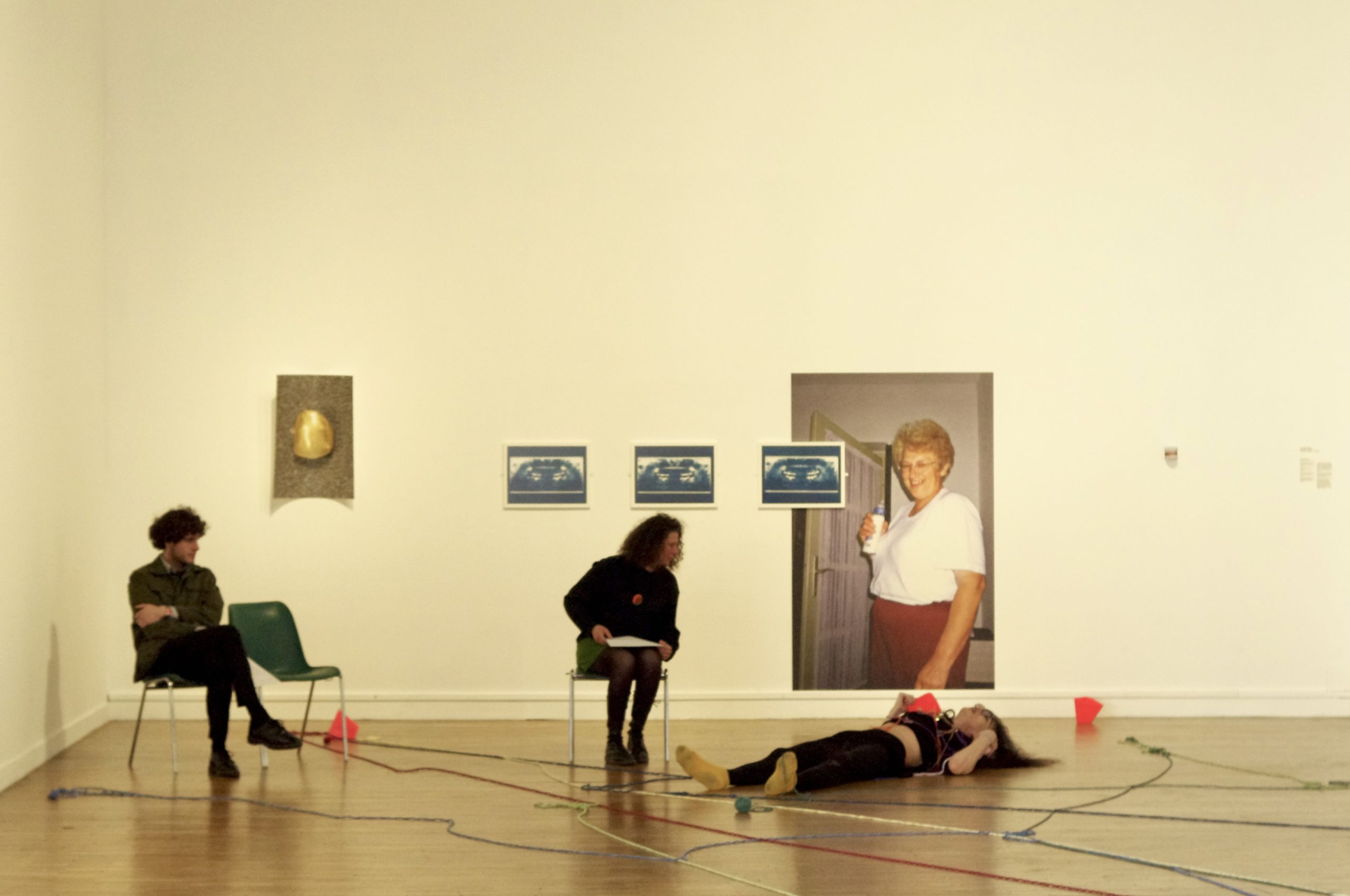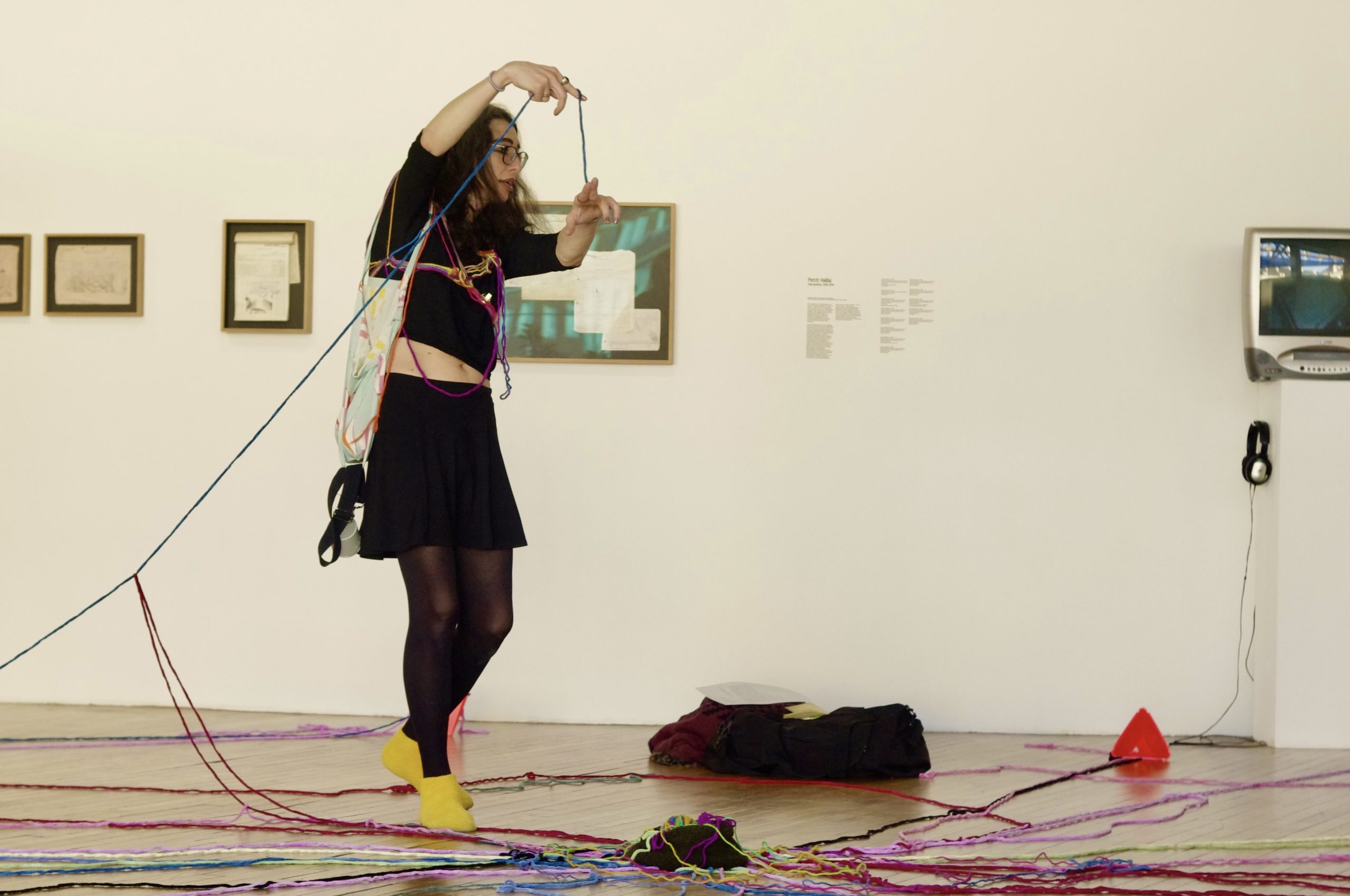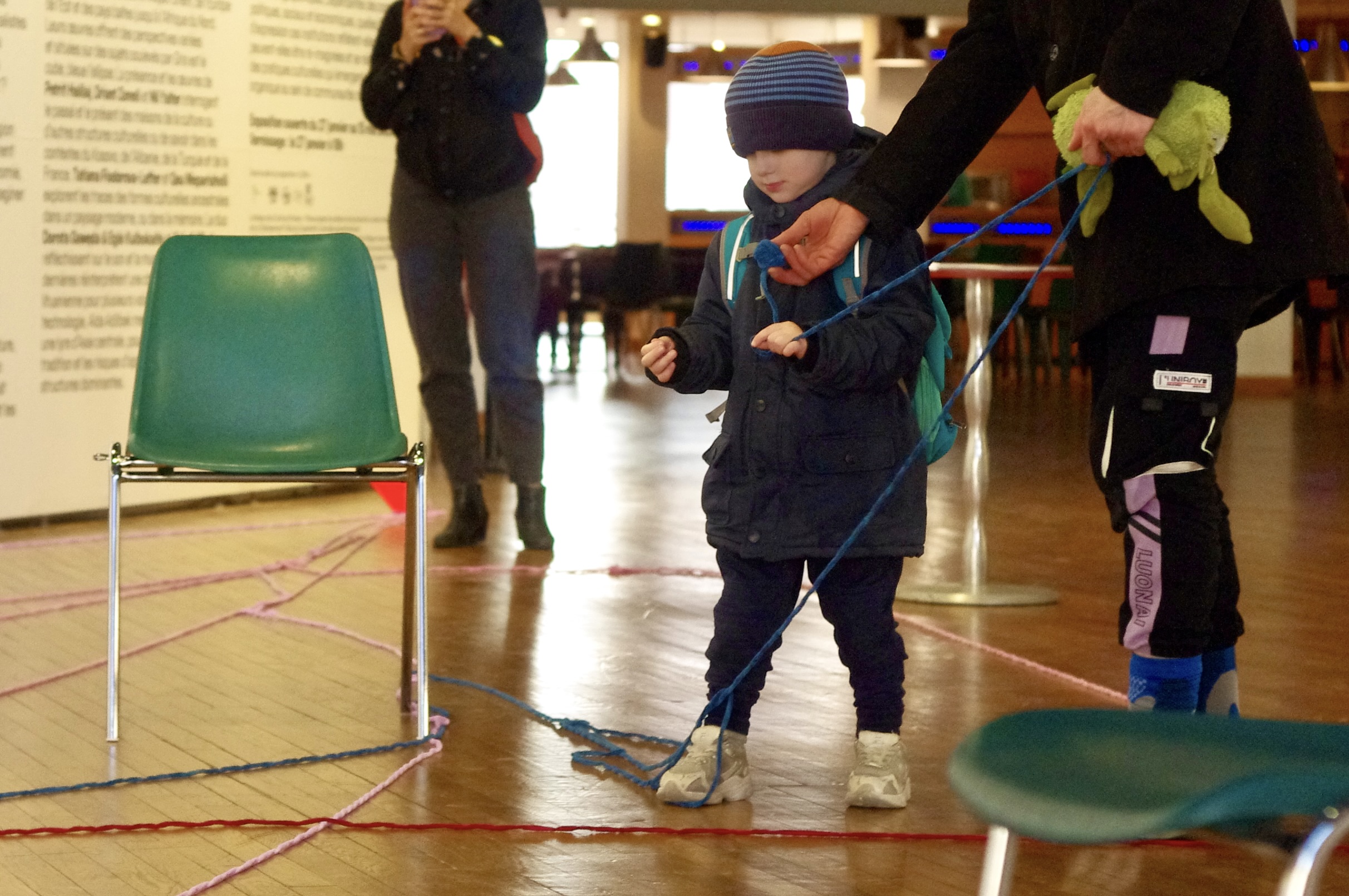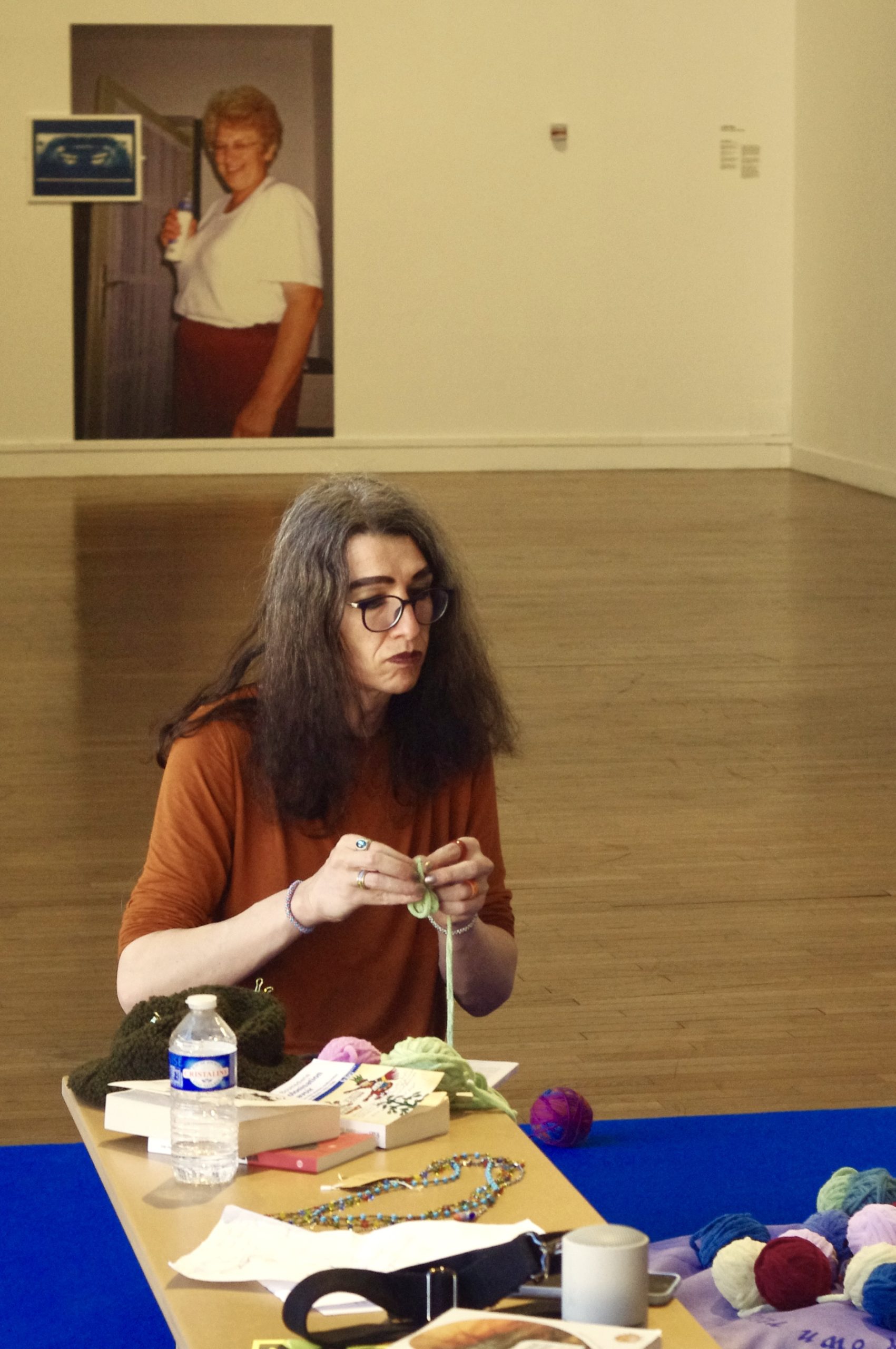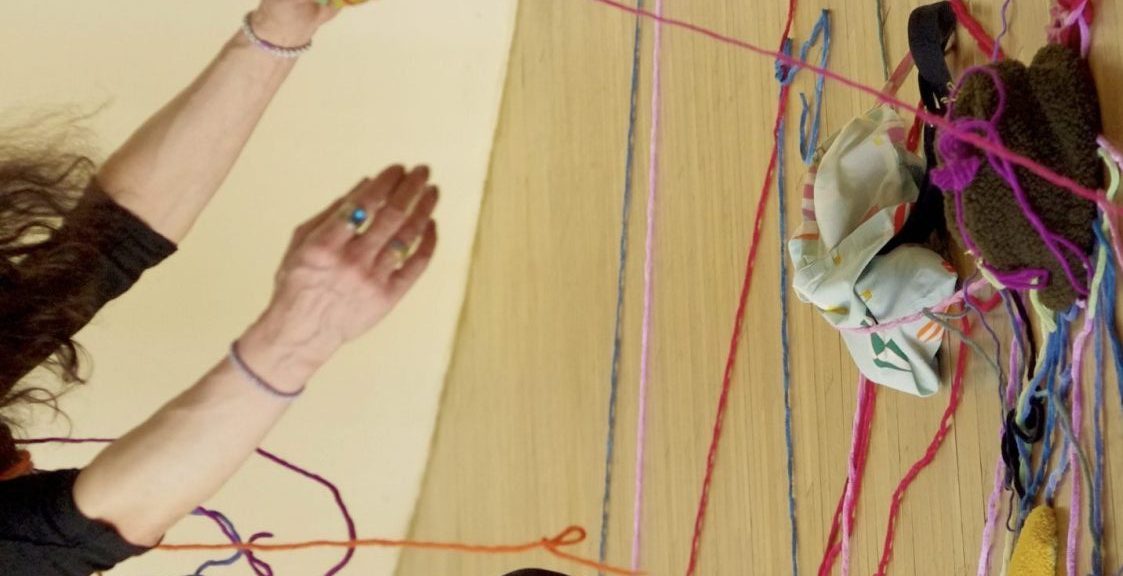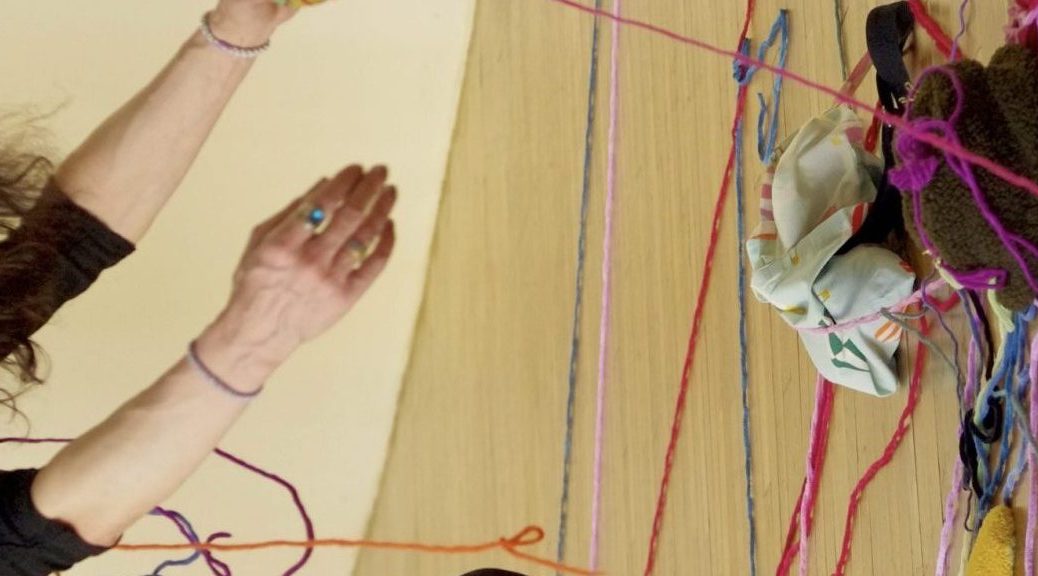le monde entier s’archipélise et se créolise
— Édouard Glissant, Traité du Tout-Monde, 1997: 194)
Genre: Performance in situ
Place: “Gris est le cube, bleue l’ellipse” exposition space.
Description: Performance unfolds as a process of marking and delineating the exhibition space structured by ten artworks. These artworks serve as symbolic centres that are marked with a specific colour and linked together by threads of routes. Connecting the centres is accompanied by a soundtrack in which different folk tunes, roughly corresponding to the place of origin of the artworks, collide and mix. The distances between the centres define cultural proximity and remoteness. Having defined near and far, a kind of circumference can be imagined around each centre: the centre’s periphery. The points where two or more peripheries intersect can give birth to a new center. According to Édouard Glissant, the birth of a new culture is the outcome of the creolisation process. In our case it will be represented by a small potted plant, as if a new species is being born through cross-pollination.
When new centres appear, it creates the possibility for new peripheries to emerge. The whole process exemplifies a complex interplay between centrifugal and centripetal forces in the modern globalised world.
Performers: Maria Vilkovisky, Ruthie Jenrbekova
On behalf of Kreolex zentre.
